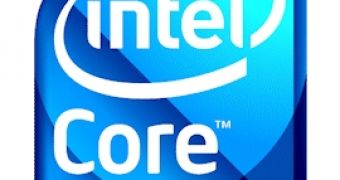Intel's next-generation Nehalem processors, officially known as the Core i7 series, will hit the market only a few weeks from now, in November. The giant chip maker is expected to offer a nice performance boost over today's CPUs with the new launch, and there are a lot of enthusiasts that can hardly wait to put their hands on one of these products. As we mentioned in some of our previous articles, the first chip of the new series is the code-named Bloomfield. As novelty is not always synonymous with increased quality, a closer look at the Core i7 processor could help you decide whether it is worth spending your money on it or not.
As the largest microprocessor manufacturer said a few times before, the ready-to-come Core i7 chips are all about technology innovations. Not all the concepts are new, yet Intel included them into the CPU, and, although we won't see them all ready in the near future; more will come in a year or two, including integrated graphics. For the beginning, the processors feature an Integrated Memory Controller, which allows the chip to connect directly to the memory.
Having an IMC is supposed to increase performance, yet the processors will get along with DDR3 only. The memory controller will support three channels of memory, each going for one of two DDR3 memory modules. Basically, any Core i7 motherboard is supposed to come with three or six memory slots, and the DIMMs will have to be installed in sets of three. Current motherboards have two or four such slots and allow only two DIMMs to be installed.
Another characteristic of the upcoming processors is the fact that they include everything on a single die: the cores, the IMC and all cache are stacked together in a single-die chip, and the level three cache featured by Core i7 is a shared 8MB. Also, the front side bus will be replaced by the QuickPath interface. What is not new on the processors is the Hyper-threading, which allows each core to handle two threads at the same time. The Operating System will basically “see” a doubled number of processors.
Gamers won't see much performance increase All these Core i7 characteristics work together to offer an average of 20 to 50 percent performance increase over the Penryn processors. This increase will be mainly visible when it comes to heavily multi-threading applications. Besides, media encoding, also relying on IMC and Hyper-threading, will register 20 to 40 percent leveraged performance levels. All good news until now, but there is a “dark side”, too. As many of the latest video games depend a lot on the cache, they will suffer a bit from the smaller one that comes with the Nehalem processors, and the performance may drop by 5 percent. Even so, some games will see up to 10 percent performance boost with the new chips.
On the power consumption side, things don't seem too bad. Since the over-all performance is expected to be heavily increased, the power consumption will raise only 10W when idle and 15W more under load. Compared core to core with the Penryn, the Nehalem seems to bring a little performance per watt increase. It remains to be seen how much power a motherboard built for the Core i7 CPU will drain and things will be clearer.
The performance increase looks very attractive, especially for those that do media encoding or work with applications that need multiple-cores. When it comes to gamers, things don't look too bright though, but they may have a chance given the fact that the chips come with the multiplier unlocked and they allow a nice overclocking to be done even if there are some limitations when it comes to the memory they use. Yet, we should take a look at pricing to see whether a Core i7 is really worth buying.
According to Intel, the cheapest Core i7 processor should cost around $284. As we're already accustomed, the price will probably be a little higher at launch, so you'll kinda need about $300 to get one. To have a Nehalem chip offer its best performance, an X58 motherboard is also required, and that accounts for other few hundreds. The new mobos are expected to stand into the $250-$300 price range, so that is more than $550 so far.
But that's not all, as the memory modules should be taken into consideration as well, and there are three DIMMs required. While a dual-channel DDR3 1066MHz or 1333MHz kit would sell for about $70, the triple channel kit should go for at least $100. The entire sum goes near $700 for a brand new Core i7 platform. Gamers will probably stay away from it (for a while). The performance brought is not too high and the price for the whole thing is not too low.

 14 DAY TRIAL //
14 DAY TRIAL //